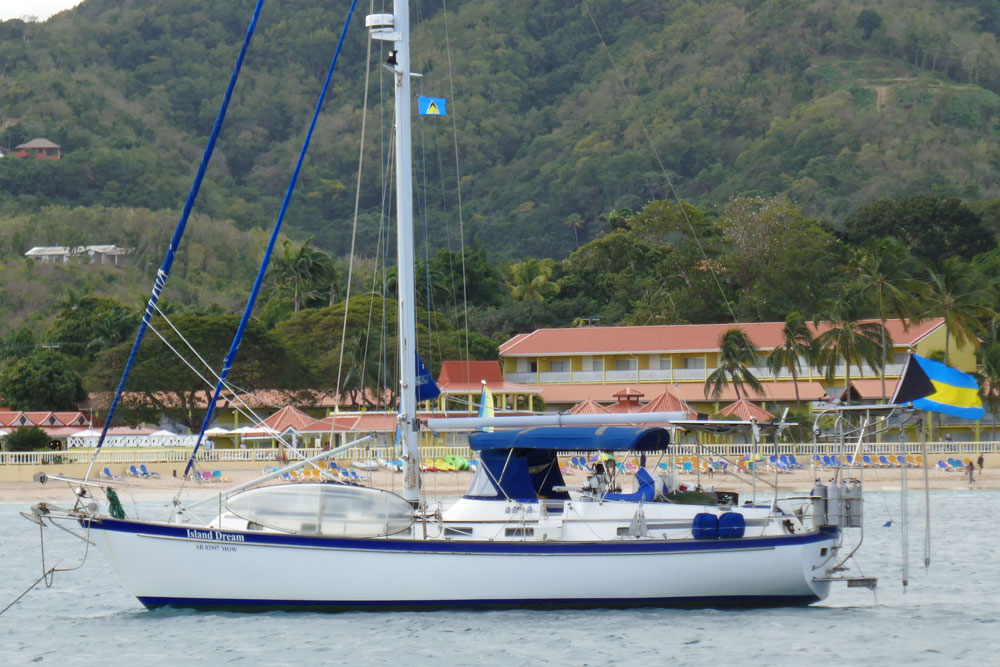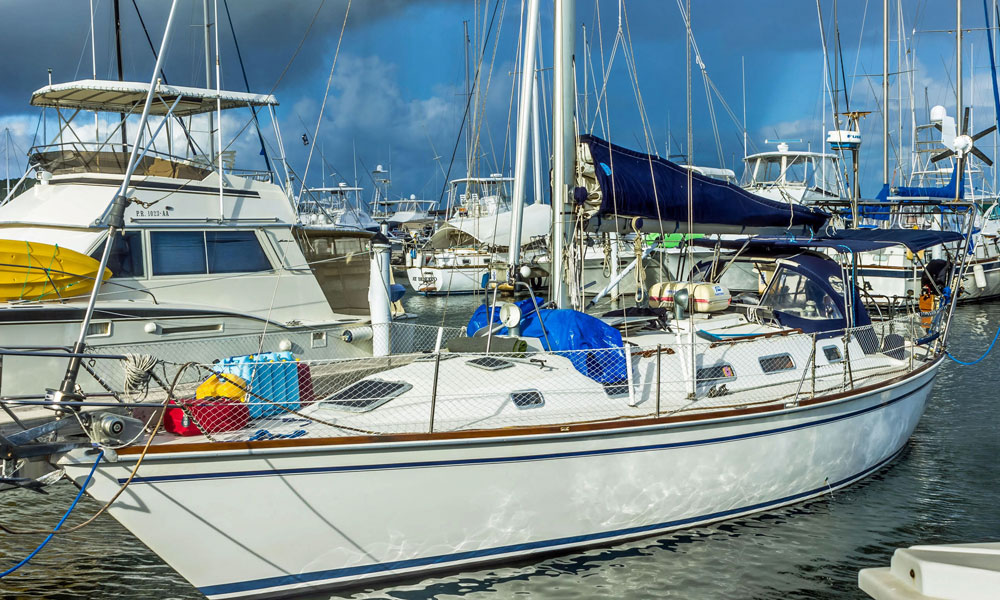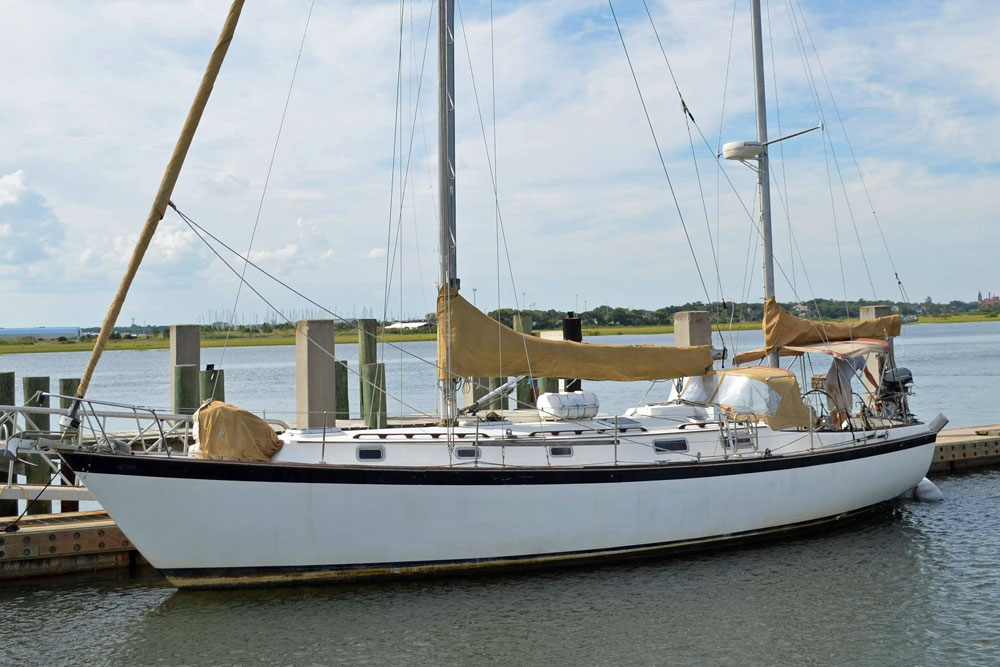- Home
- Cruising Yachts 35' to 40'
- Pearson 365
The Pearson 365
Specs & Key Performance Indicators
The Pearson 365 sailboat, designed by renowned American naval architect Bill Shaw, is a classic cruiser known for its robust construction and seaworthiness. The boat was manufactured by Pearson Yachts, based in Portsmouth, Rhode Island.
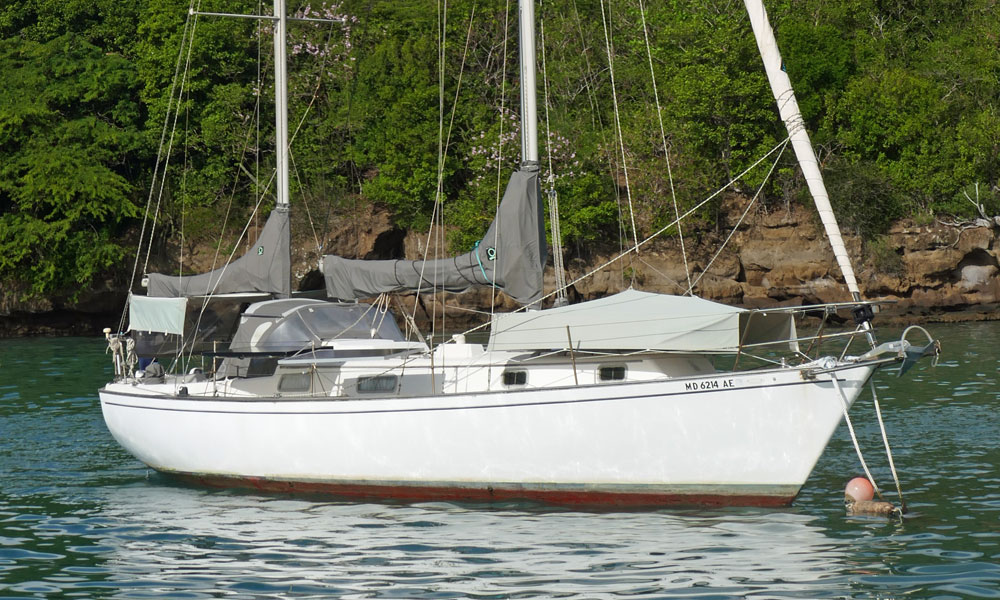 A Pearson 365 Ketch
A Pearson 365 KetchEstablished in the late 1970s, the Pearson 365 was designed to offer a balance of comfort and performance for long-distance cruising and liveaboard versatility. Pearson Yachts, a prominent organisation in American boat manufacturing, was instrumental in popularizing fiberglass hulls, setting new standards in the industry with the 365 model.
The Pearson 365 is a classic aft-cockpit cruising sailboat designed by William Shaw is a versatile and comfortable boat that can handle both shallow coastal waters and open sea passages.
There were several alternative versions; a few were sloops, cutters, or pilothouse models, the vast majority were designed with ketch rigs.
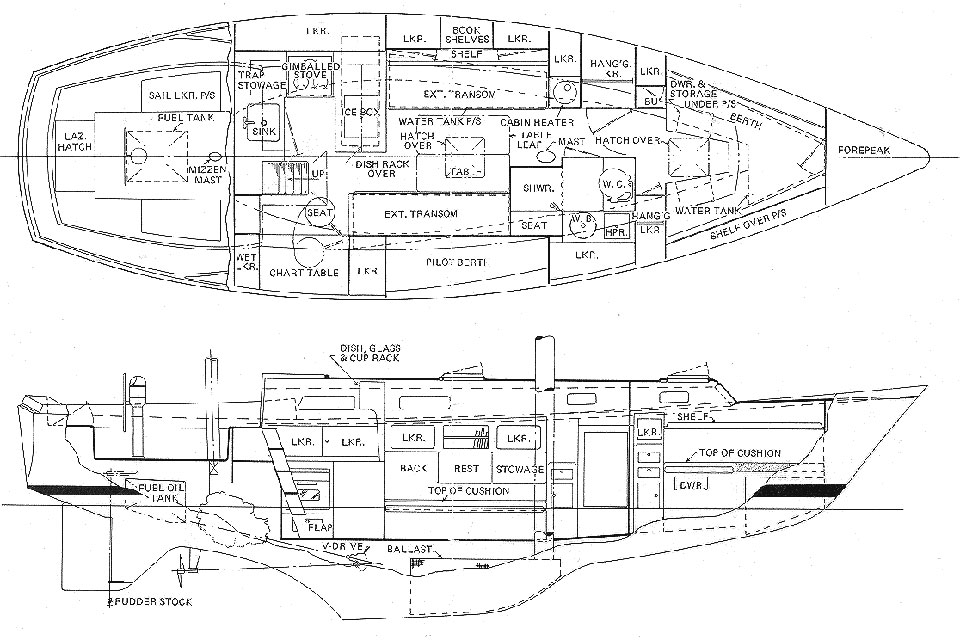 Pearson 365 accommodation layout
Pearson 365 accommodation layoutPublished Specification for the Pearson 365
Underwater Profile: Fin keel with skeg-hung rudder
Hull Material: GRP (Fibreglass)
Length Overall: 36'5" (11.1m)
Waterline Length: 30'0" (9.1m)
Beam: 11'5" (3.5m)
Draft: 4'6" (1.4m)
Rig Type: Ketch*
Displacement: 17,700lb (8,029kg)
Designer: William Shaw
Builder: Pearson Yachts (USA)
Year First Built: 1976
Year Last Built: 1982
* Also available as a sloop or cutter
Published Design Ratios for the Pearson 365
The Pearson 365 sailboat exhibits several design characteristics that can be analyzed through various design ratios, providing a theoretical understanding of its sailing performance and comfort.
- With a Sail Area/Displacement Ratio of 14.5, the Pearson 365 falls into the underpowered category, suggesting its performance might be more moderate compared to high-performance sailboats. This ratio indicates that its sail plan is not overly aggressive, making it suitable for comfortable cruising rather than racing.
- The Ballast/Displacement Ratio stands at 41.2, meaning the Pearson 365 is likely to be a stiffer and more powerful boat capable of standing up better to winds. This high ratio often signals good initial stability, though the actual stiffness will depend somewhat on the distribution of the ballast within the hull, an aspect not directly addressed by this ratio.
- With a Displacement/Length Ratio of 293, the Pearson 365 is classified under the Heavy Displacement category. This implies that the boat has substantial mass relative to its length, which generally produces a smoother ride in rough water but at the expense of agility and speed in light wind conditions.
- The Comfort Ratio of 33.4 aligns the Pearson 365 with moderate bluewater cruising boats. This suggests it has adequate heft and beam to minimize uncomfortable pitching and rolling, making it more comfortable for long-duration voyages in open waters, though it may not provide the comfort levels characteristic of heavier displacement, narrower beam vessels.
- Lastly, the Capsize Screening Formula score of 1.8 supports the boat's suitability for ocean passages, pointing towards a design that is less likely to capsize due to its beam and displacement characteristics, enhancing safety in challenging conditions.
It's important to understand that these ratios, while useful for giving a quick theoretical snapshot of boat characteristics, have limitations. For instance, the Ballast/Displacement Ratio does not account for how the ballast is distributed vertically within the hull which can affect performance significantly. Similarly, the Comfort Ratio may favor traditionally designed heavy cruisers, potentially underestimating the comfort provided by more modern light-displacement designs with different hull forms. These factors should be considered along with practical experiences and reviews for a comprehensive understanding of the boat's capabilities.
Press Reviews for the Pearson 365
Sailing Magazine tells us:
"Bill Shaw had a practical appreciation for sailboats, designing boats with traditional lines capable of cruising chest-deep coastal waters and crossing the open sea. He began his career working for 12 years alongside legendary naval architect Olin Stephens as part of the team at Sparkman & Stephens in New York. He then joined Pearson Yachts as its chief designer and would ultimately give the recreational sailing world some of its most popular boats, including the Pearson 26, Pearson 30 and the Pearson 365." Read more...
This article was written with the assistance of Gemini, a large language model developed by Google. Gemini was used to gather information, summarize research findings, and provide suggestions for the content and structure of the article.
Other sailboats in the Pearson range include:
Recent Articles
-
Which Type of Boat Fridge Is The Most Efficient?
Apr 24, 25 05:06 AM
The top opening boat fridge is reputed to be more efficient than the front opening type, but that may not be the case - and here, amongst other boat refrigeration considerations, is why -
Multihull Autopilot Selection is Not Straightforward
Apr 19, 25 01:25 PM
Whether its for a catamaran or a trimaran, tiller or wheel steered, a multi hull autopilot must be endowed with specific performance characteristics... -
Wheel-Steering Autopilots: Your Questions Answered...
Apr 18, 25 03:45 PM
Whatever your question, you should find the answer here
